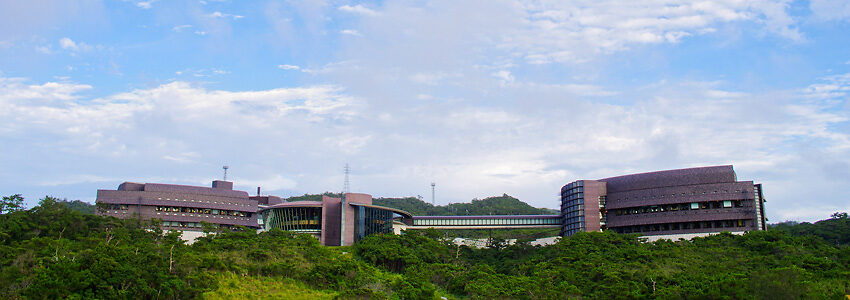Developing Neural Circuits Course 2019: Jul. 29 ~ Aug. 12

Course Directors:
Yoko Yazaki-Sugiyama, OIST Neuronal Mechanism for Critical Period Unit
Ichiro Masai, OIST Developmental Neurobiology Unit
David Van Vactor, Harvard Medical School/OIST
Hiroshi Kawasaki, Kanazawa University
Hiroshi Kohsaka, University of Tokyo
What's new
- Jul. 24: Opened transportation schedules
- Feb. 28: Extended application deadline to Mar. 9.
- Feb. 22: Updated lecturer list.
About this course
The assembly of the functional nervous system is one of the most complex developmental process in nature. Discovering the mechanisms involved is vital both for advancing basic scientific understanding and as a foundation for future strategies to treat neurological disorder, congenital cognitive impairment and neural injury. This course aims to efficiently and rapidly introduce students to the intellectual background, model systems, experimental methods and expert investigators in this topic area and will be of tremendous value in establishing the next generation of young neurobiologists.
Overview of DNC2019
DNC2019, the tenth Developing Neural Circuits Course (former Developmental Neurobiology Course), will be held at Okinawa Institute of Science and Technology Graduate University and begin on July 29 and run through August 12, 2019.
- This course is designed for Ph.D. Students and junior postdocs.
- All lectures will be given in English
Important Dates
- Open for applications: January 31, 2019
- Application deadline: February 28, 2019
- Notification of acceptance: April 1, 2019
Application
- This course is designed for Ph.D. Students and junior postdocs.
- Deadline: 23:59, February 28, 2019 (PST)
- To apply to participate in this course, please go to the Application Form.
Support for participants
Okinawa Institute of Science and Technology covers:
- Tuition
- Lodging, meals during course (full coverage)
- Travel (partial coverage)
We strongly encourage applicants to seek external travel grants/fellowships.
For more information, go to Travel and Accommodation page.
Course Lecturers
Yang Dan (UC Berkeley)
Filippo Del Bene (INSERM)
Wen-Biao Gan (NYU)
Paul Garrity (Brandeis University)
Jesse Goldberg (Cornell University)
Stephanie Gupton (UNC)
Joshua Johansen (RIKEN CBS)
Ikue Mori (Nagoya University)
Akinao Nose (University of Tokyo)
Suzanne Paradis (Brandeis University)
Naoshige Uchida (Harvard University)
Kristin White (Harvard University)
Yutaka Yoshida (OIST/Cornell)
Rafael Yuste (Columbia University)
Michisuke Yuzaki (Keio University)
Lab Course: Lecturers and Description
Hiroshi Kawasaki (Kanazawa University)
In utero electroporation: In utero electroporation has been widely used to introduce transgenes into the mouse embryo in the uterus. The aim of this course is to understand a method to introduce transgenes into the developing mouse brain using this technique.
Ichiro Masai (OIST)
Live imaging of zebrafish nervous system: Zebrafish is an animal model suitable for live imaging and has contributed to understanding the mechanism of cell differentiation and organogenesis. Here, we will introduce live imaging techniques using confocal laser scanning microscope and light sheet microscope and provide course students an opportunity to conduct time-lapse observation of cell behaviors in various zebrafish transgenic system.
David Van Vactor (Harvard/OIST) and Hiroshi Kohsaka (University of Tokyo)
The neuroplasticity of motor circuits and synapses in Drosophila: The development, plasticity and function of the neural circuits underlying movement and locomotion are both ancient and fundamental to all metazoan animals. Using a combination of live and confocal imaging techniques, we will explore the molecular machinery that sculpts and regulates motor circuits and activity-dependent synapse architecture in the Drosophila larval neuromuscular system, where a powerful convergence of genetics, neuroanatomy and behavior offer unique advantages.
Yoko Yazaki-Sugiyama (OIST)
Auditory electrophysiology of songbird: Brain functions with fast and dynamic electrical activity of the neurons. Using auditory bran areas of a songbird, zebra finch, we will introduce electrophysiological approaches to analyze neural activity encoding bird’s courtship song in anesthetized or free-behaving animals.
DNC2019 Program
Go to DNC2019 Program Page for details
Contact
If you have any questions, please contact: dnc.secretariat[at]oist.jp



